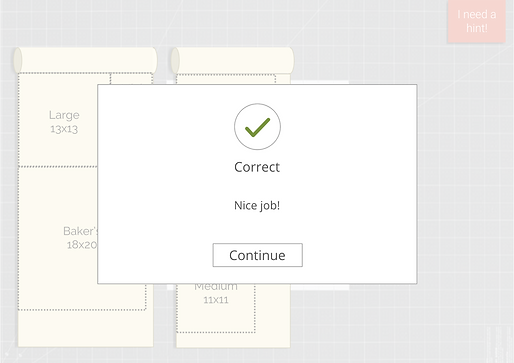Fabric fitting activity
Interactive job aid

The project
This learning activity is part of an eLearning module about determining production needs. It follows a tutorial video that explains how to select an appropriate roll of fabric. In this drag-and-drop activity, learners practice fitting an outline of a waxed food wrap onto fabric rolls.
-
Tools: Articulate Storyline 360, PowerPoint
-
Learners: New hires at a waxed food wrap manufacturer
The problem
The company, which produces reusable waxed food wraps, uses two widths of fabric roll — one wide and one narrow — to maximize production efficiency. In our initial consultation, the company owner noted that new employees often found it difficult to choose the correct roll, thereby increasing waste. The solution at the time, a job aid attached to the work surface, had mixed results in practice.
The solution
After learning the criteria for choosing a roll, learners needed a chance to practice in a low-stakes environment. Practicing on real fabric was costly and wasteful. For this reason, I created a virtual activity where learners could practice fitting the various wrap sizes onto different fabric roll sizes.
The Process
Using shapes in PowerPoint, I designed two fabric rolls and outlines of each wrap size (to scale). Then, using the current job aid as a guide, I designed a drag-and-drop interaction that allowed users to fit differently sized wraps on top of the two rolls.
When learners submitted their responses, they received feedback on whether they had chosen the correct roll. If not, they had unlimited chances to try again. In addition, I included an “I need a hint!” button, which would show learners an updated version of the job aid. (Since the job aid would always be available, there was no reason for learners to memorize the information.)
Users found the learning activity “super helpful.”
Here is a video of the interaction:
Takeaways
In this case, the practice element was critical. In the past, new employees had learned by making mistakes cutting the fabric. While that method works for training, it is ultimately more expensive, wasteful, and time-consuming than the virtual version.

